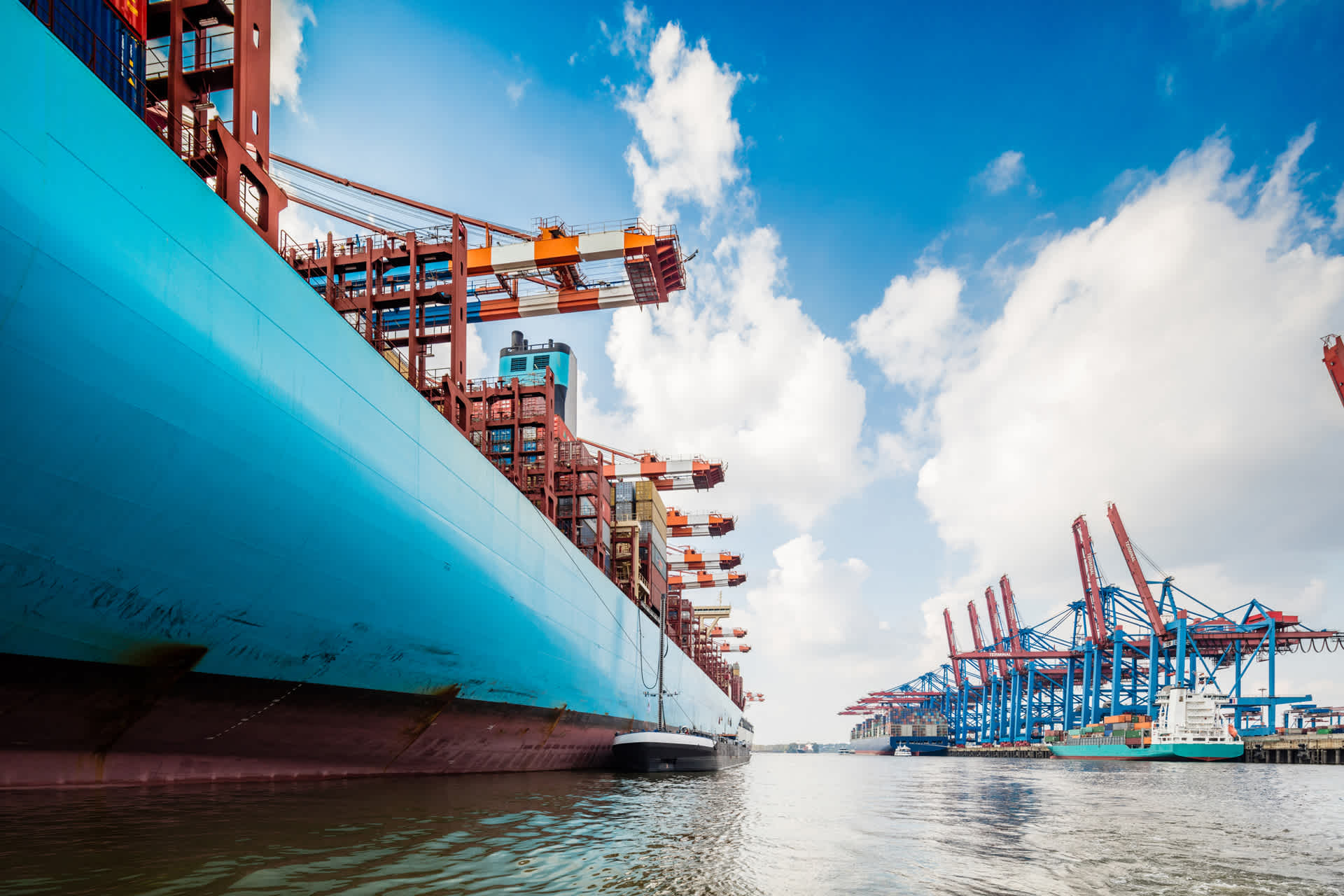Global Logistics Update
Freight Market Update: June 14, 2022
Ocean and air freight rates and trends; customs and trade industry news plus Covid-19 impacts for the week of November 16, 2021.
Freight Market Update: June 14, 2022
North America Freight Market Update Live | Thurs, June 16 @ 8:30 am PT / 11:30 am ET
The State of Trade: Cracking Bullwhips Versus Packing Full Ships | Weds, June 22 @ 9:00 am PT / 12:00 pm ET
European Freight Market Update Live | Tues, June 28 @ 16:00 CEST/ 15:00 BST
Ocean Freight Market Update
Asia → North America (TPEB)
- Rates continue to fall on TPEB as demand remains soft relative to capacity available, especially to Pacific Southwest ports. Shipping activity has resumed in Shanghai, although the strength and timing of the volumes rebounding after two months of Covid-19 related lockdowns remains unclear. International Longshore and Warehouse Union (ILWU) and Pacific Maritime Association (PMA) labor negotiations continue as July 1st, when existing contracts expire, rapidly approaches. Intermodal bottlenecks, chassis shortages, and high fuel prices continue to pose additional challenges despite the improved balance between supply and demand.
- Rates: Levels remain elevated relative to the pre-Covid market with softening in many major pockets.
- Space: Mostly open, except in a few pockets.
- Capacity/Equipment: Open, except in few pockets.
- Recommendation: Book at least 2 weeks prior to cargo ready date (CRD). For cargo ready now, importers might consider taking advantage of currently available space and softer floating market rates.
Asia → Europe (FEWB)
- Following the Shanghai reopening, volumes are picking up again but recovery has not translated into a big surge thus far. The third quarter is the traditional peak so volumes are expected to be stronger. Uncertainties on a macro level such as the Ukraine conflict, high inflation across Europe and low consumer confidence are playing a role in actual demand levels.
- Rates: General rate extensions from carriers for 2H of June with some indicating increases for July.
- Capacity/Equipment: Overall space is starting to fill up again. Congestion in European ports is causing sailings to return to Asia late, resulting in additional delays and some blank sailings.
- Recommendation: Allow flexibility when planning your shipments due to anticipated congestion and delays.
Europe → North America (TAWB)
- No changes overall on the congestion situation which is slowly improving on both coasts of North America. Some issues persist for cargo routed via Hamburg due to ongoing congestion there.
- Rates: Most of June rates are extended through July. No signs of decrease so far.
- Space: Still very tight but with some signs of improvement on certain loops for both the U.S. east coast (USEC) and U.S. west coast (USWC).
- Capacity/Equipment: Capacity remains tight for both Northern Europe and Mediterranean services. Better equipment availability at port. Shortages remain at inland depots.
- Recommendation: Book 4 or more weeks prior to CRD. Request premium service for higher reliability and no-roll.
Indian Subcontinent → North America
- Drop in Rates experienced for 1H June may not stay for long. Carriers such as MSC have already indicated a General Rate Increase (GRI) effective in July.
- Rates: Continue to decrease heading into 2H June.
- Space: Available at Freight All Kinds (FAK) rate levels.
- Capacity/Equipment: Remaining stable with some reported deficits of equipment at Inland Container Depots (ICDs).
- Recommendation: Take advantage of declining rates. In the past carriers have implemented blank sailings to avoid underutilization. This could lead to increased rates on the horizon.
North America → Asia
- Vessel arrivals and available capacity remain fluid for all USWC ports. Continuing blank sailings due to the vessel backlog in Shanghai can be expected. The USEC continues to see challenges with vessel congestion and some vessel strings omitting Charleston and Savannah entirely. Erratic vessel schedules continue to cause significant challenges with posted earliest return dates and vessel cut-offs at the port.
- Rates: Limited GRI for June as well as July announced.
- Capacity/Equipment: Deficits on containers and chassis continue to plague Inland Port Intermodal (IPI) origins. Chicago has been the most reliable. Availability for standard equipment at ports has not been an issue for most ports but a large number of carriers have advised of continuing shortages on 40s at the port of Oakland.
- Recommendation: Please place bookings 4 weeks prior to vessel Estimated Time of Departure (ETD).
North America → Europe
- Significant congestion and vessel delays in Europe remain in addition to the ongoing schedule issues for USEC ports. The port of Houston continues to experience significant capacity constraints due to schedule delays and port congestion with one service being reduced from weekly to biweekly. USWC service to Europe remains extremely tight due to void sailings and skipped ports caused by systematic delays. The suspension of Pacific Northwest coverage for North Europe may be lifted in July if the operational situation permits. USWC coverage for Mediterranean ports now has reduced capacity due to one string being phased out.
All carriers have issued a booking stop for shipments to Ukraine, Russia, and Belarus. - Rates: No GRI announced for June and no ocean freight increases anticipated for July.
- Capacity/Equipment: Deficits are still plaguing IPI origins. Availability for standard equipment at ports has not been an issue, but special equipment is hard to come by.
- Recommendation: Please place bookings 3 to 4 weeks in advance for East Coast/Gulf sailings and 6 weeks for Pacific Coast sailings.
North America Vessel Dwell Times

Air Freight Market Update
Asia
- N. China: Demand is beginning to recover and production picking up, however there is a surplus of TPEB capacity causing rates to drop, while far east west bound (FEWB) rates remain stable.
- S. China: The overall market is soft and demand weak with rate levels decreasing.
- Taiwan: The market is slow but stable, however factories continue to face shortages of raw materials. Discounts are available to dense and loose cargo.
- Korea: Market demand to the USEC and FEWB tradelane continues to be weak, while demand to the USWC remains stable. Due to the ongoing trucking union’s strike, there is some difficulty arranging pickups and deliveries to and from the ports.
- SE Asia: Demand ex-Thailand is quite weak with carriers eager for cargo. Passenger capacity is expected to improve as Thailand continues to welcome tourists. The Malaysian market continues to be affected by raw material shortages. Demand is expected to pick up in July as more Chinese factories ramp up production. TPEB demand ex-HAN is continuing to pick up as we approach the quarter end. Space is also getting tighter especially due to congestion at transit hubs. TPEB rate levels are expected to increase next week, while FEWB rates are trending downwards due to weak demand. TPEB demand ex-SGN dropped slightly compared to the week prior but rate levels still remain the same. The FEWB tradelane continues to see weak demand and stable rates.
Europe
- Demand is stable at reduced levels while fast/high-end fashion is still showing higher demand due to the season change.
- Capacity is stable at an all time high, rate levels are starting to reduce especially on the transatlantic (TA) trade lane.
- Jet fuel pricing continues to decrease and is now reflected in the fuel surcharge charged by carriers.
- Freighter capacity is improving with better rates and lead times, booking to uplift window is approx 5-10 days.
- Build pallets below 160CM increase the possibilities of better uplift and rates based on passenger capacity.
- Deferred routings via secondary hubs are still providing cheaper rates overall.
- For all trade lanes, continue to place bookings early to secure the best uplift options/routings.
Americas
- Demand remains high, especially into Europe. Capacity is manageable, and has already surpassed 2019 pre-covid levels.
- Los Angeles, Chicago, and New York (LAX/ORD/JFK) ground-handlers are busy due to the high export volumes and origin dwell times of 2-3 days have been reported in some cases.
- Capacity into Shanghai has normalized and most carriers have resumed normal operations and schedules.
- Rates remain stable week over week.
Trucking & Intermodal
Americas
- US Import/Export Trucking
- Market Trends
- New York, Savannah, Houston, and Norfolk ports have all seen vessels at anchor during May; increased volumes have caused chassis shortages and empty return difficulties especially in NY/NJ.
- Oakland and Seattle/Tacoma are experiencing 12+ day port dwell times. Intermittently empty return restrictions from steamship lines have limited the number of available chassis, reducing the trucking capacity in these markets.
- Toronto rail ramps continue to experience a high volume of import containers on the ground, causing a need for additional lifts that lead to higher wait times inside the terminals.
- West Coast labor discussions between the International Longshore and Warehouse Union (ILWU) and the Pacific Maritime Association (PMA) started June 1st, the current contract expires on July 1, 2022.
- Highway Diesel fuel prices continue on a record high. East coast, midwest, central atlantic, lower atlantic and gulf coast prices trended down in the second half of May, while west coast and Rocky Mountain prices rose through the second half of May.
- US Domestic Trucking
- Contract business is gaining more interest from carriers than spot loads as fuel surcharge agreements are almost exclusively associated with contract freight.
- Diesel prices remain at record highs, peaking at $5.62/gallon in May. Fuel continues to be a much more taxing operating expense for fleets both on loaded and empty miles.
- Tender volumes climbed back at the tail end of May largely due to Memorial Day push; however, overall volumes are still low—down 20% YoY.
- Tender rejection rates bounced back marginally the last week of May after diving 8%.
- Capacity has tightened in the South & Southeast markets due to produce season.
- We are still seeing lower spot rates in the market (down 20%+ YoY), but they crept up in the final days of May.
Customs and Compliance News
Congress Sends Ocean Shipping Reform Act to President Biden’s Desk
On June 14, the House of Representatives passed the Ocean Shipping Reform Act by a vote of 369-42. This bill aims to clear out supply chain bottlenecks, punish carriers for unfair practices, and generally address the ocean freight import and export process in the United States. President Biden is expected to sign the bill soon.
Factory Output news
- United States: The index for final demand goods moved up 1.4 percent in May, marking the fifth consecutive rise month over month, the U.S. Bureau of Labor Statistics reported. Source
- Vietnam: Foxconn, Apple's key assembly partner said its Chinese rivals in Vietnam have set up operations near its campuses to poach the company’s employees. Source
- Cambodia: XAG brings Drone Innovation to Cambodian Farmers for Sustainable Cassava Production which reduces costs and improves efficiency. Source
- Thailand: Exports are expected to rise by 5-8% this year, supported by a weaker baht and economic growth of trade partners. Source
- Malaysia: Everyone from palm oil plantations to semiconductor makers are rejecting orders due to a shortage of migrant labor. Source
- Sri Lanka: The fully booked apparel industry in Sri Lanka feels the hit as customers move orders away from Sri Lanka due to the ongoing economic crisis. Source
- Bangladesh: Bangladesh embassy is working with Brazil to increase import of Cotton from the current 10.6% market share. Source
Freight Market News
Spot Rates from Asia to N. Europe Set to Spike
The Loadstar reports that despite a softening in demand, container spot rates from Asia to North Europe are likely to spike in coming weeks. This is caused by chronic yard congestion being experienced at North European hub ports. That congestion is being exacerbated by potential strikes by dock workers in the region.
Ocean Shipping Reform Act Passed By Congress
SupplyChainDive reports that the Ocean Shipping Reform Act has officially passed through the Congress, and will be sent to President Biden to sign the bill into law. The bill would broaden the scope of the Federal Maritime Commission’s (FMC) powers to promote U.S. exports and encourage reciprocal trade. This act represents the largest overhaul of shipping regulations since 1998.
Flexport Research Updates
Weekly Economic Report: Stop Being So Negative
The European Central Bank (ECB) has arrived late to the monetary policy tightening party but is more hawkish than expected. The structure of its actions—alongside those of the Fed—could have significant disruptive implications for financial market functioning as well as for consumers’ wallets.
Air Timeliness Indicator
The Air Timeliness Indicator measures the amount of time taken to move airfreight along two major trade lanes from the point of consolidation to arrival at final destination. The latest indicator saw the TPEB rise slightly to 11.3 days for the four weeks leading to June 12, while the FEWB fell to 9.9 days. Both levels were last seen in early April and may reflect seasonal shifts working their way out of the system as importers switch to summer goods.
Ocean Timeliness Indicator
The Ocean Timeliness Indicator similarly measures transit time for ocean freight along the same two trade lanes. In the past week, the TPEB and FEWB each decreased to 99 days, hitting levels last seen in fall of 2021. Continued improvements in cargo ready to departure times may still be moving through the system as Asian ports debottleneck. The indicator may also be showing that the worst of late 2021 congestion may be passed, but the metric remains well above pre pandemic levels.
Logistics Pressure Matrix
Flexport’s Logistics Pressure Matrix (LPM) gathers 10 data points in an attempt to provide a picture of the challenges facing logistics networks from the demand side and a view of ongoing activity on US-inbound routes. In the latest update, consumer expectations fell dramatically to the lowest level in over ten years. A new measure of warehouse pricing indicates that the price of storing inventory remains high along with shipping. Origin ocean handling times continue to improve while air transit times remain near previous levels.
Freight Market Update is a complimentary service from Flexport, the modern freight forwarder. If you're not already a subscriber, we invite you to subscribe here.
Please note that the information in our publications is compiled from a variety of sources based on the information we have to date. This information is provided to our community for informational purposes only, and we do not accept any liability or responsibility for reliance on the information contained herein.


